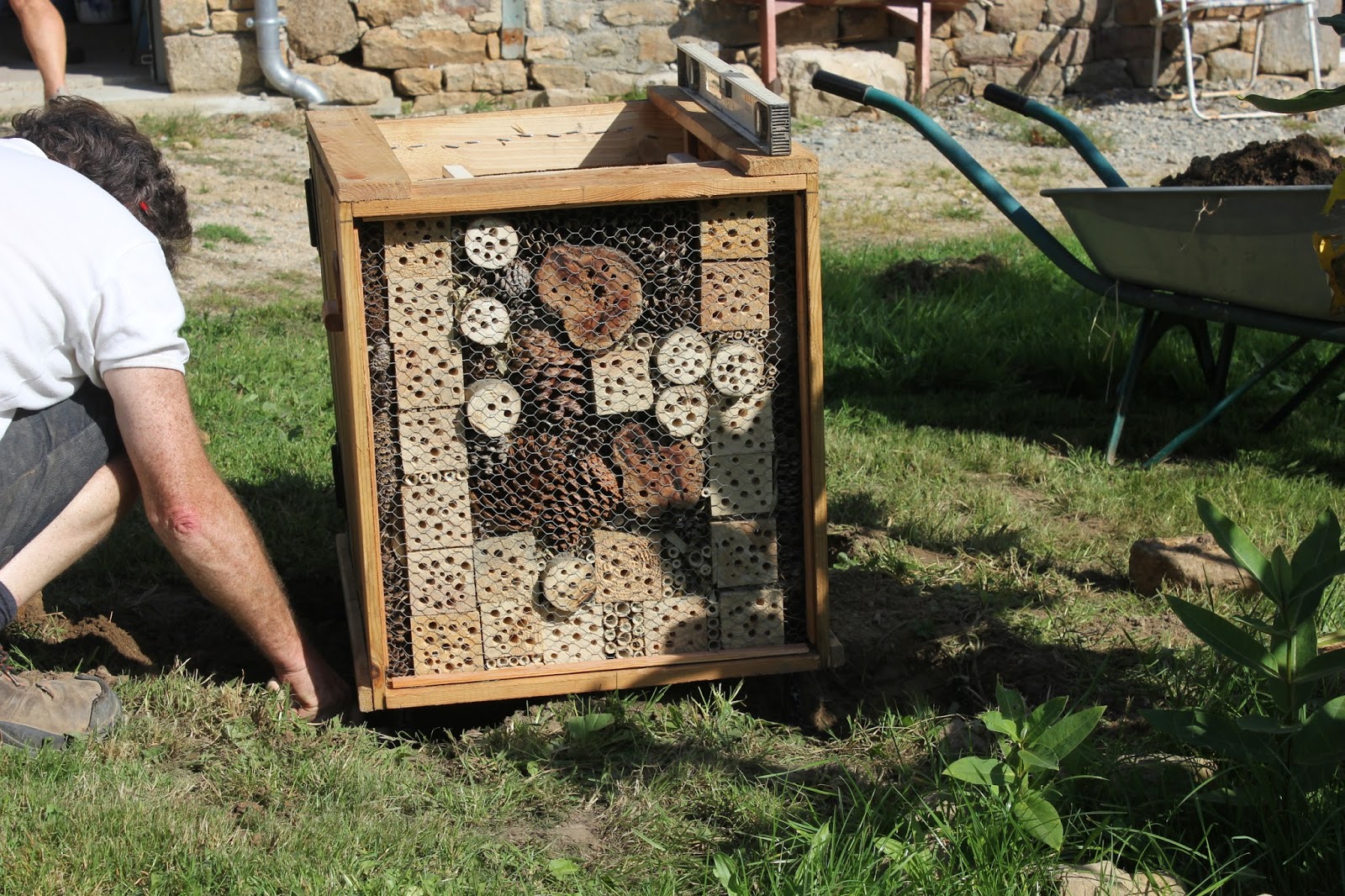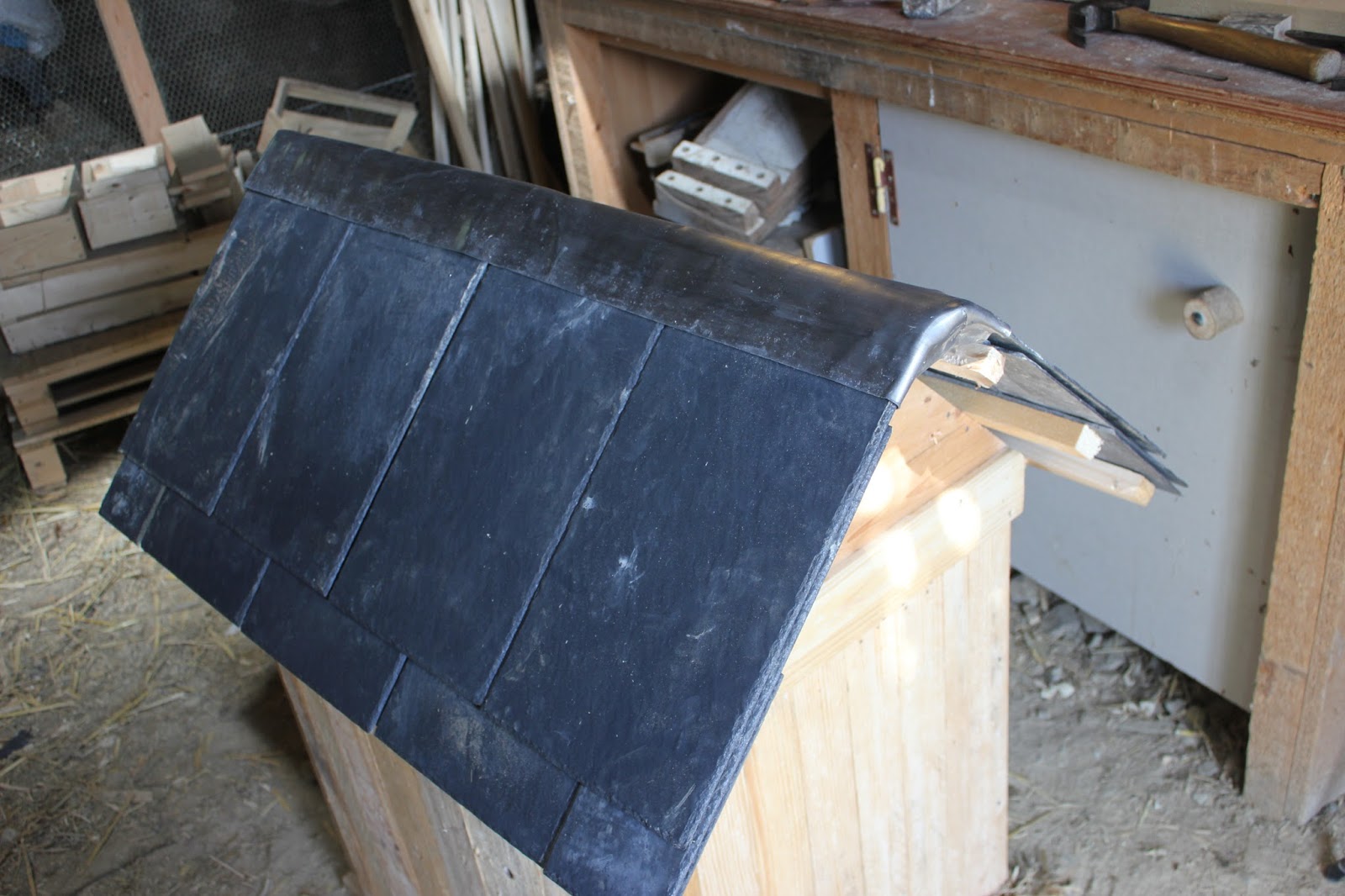(The Design & Construction of the Insect Hotel can be found here)
Having made the insect hotel, its roof and metal posts in 'kit' form as it were, it was time to transport it and put it in place. Arriving at our friend’s house a little preparation was required (before operating shave the patient). A quick run around the grass with the mower cleared the area.
The bottom portion of the hotel was then lowered over the utility box such that the box was roughly centred within the structure.
I used the metal posts laid on the grass to indicate the position of the hotel’s corner posts.
Lifting the hotel clear of the box, I could then dig four holes to accommodate the metal posts.
The non-rebar section of the metal posts were then pushed up the holes drilled in the corner posts of the hotel. Thus, the hotel was supported on these structures.
The hotel was lowered over the utility box once again, this time ensuring the metal posts were in the holes.
I wanted the bottom perimeter of the hotel to be above the soil so as to prevent rot. To this end, stones were packed beneath the metal posts and at the same time the hotel level.could be adjusted.
Once the height and levelness of the hotel base was attained, I could fix the posts in position with a mix of concrete. This is a compound I do not like to use, but I felt that I could justify the small quantity required for this job. The alternative I had considered was to excavate and bury a metal ‘ring beam’ with the four metal corner posts pointing upward to support the hotel. Alternatively, The whole assembly could have been fixed to galvanised steel posts hammered into the ground, something I would have done if I’d known where the underground electrical supply cables were running. I felt that the method I was using was the best for the time I had.
Finally, before leaving the concrete to set, I checked both doors of the hotel opened without any binding.
Having put the roof assembly onto the base and rechecking the levels, I then left it for 24 hours.
The next morning the, now set, concrete was covered with soil and tamped down. I packed some flatter stones under the wooden edges of the hotel base to give some added support.
And that was it, one ugly utilitarian box hidden by an elegant and serviceable insect hotel. Funnily enough on the way back from our friend’s property we passed through a small town where five or six new houses have been built. All the houses are designer-built and each is different in size shape and materials of construction. Every one of these had the same ugly utility box cluster at the front of the property. So if you know someone in a similar position, with a big unsightly pile of plastic in front of their new property or renovation, then please pass this idea on to them and so then more insects can have deluxe accommodation in their own five star insect hotel.
Thanks for dropping by and if you have enjoyed this post please share and feel free to comment, ask questions or relate your own experience of the de-uglification of utility boxes.
All the best from sunny Normandie, Andy
© Andy Colley 2014


















































